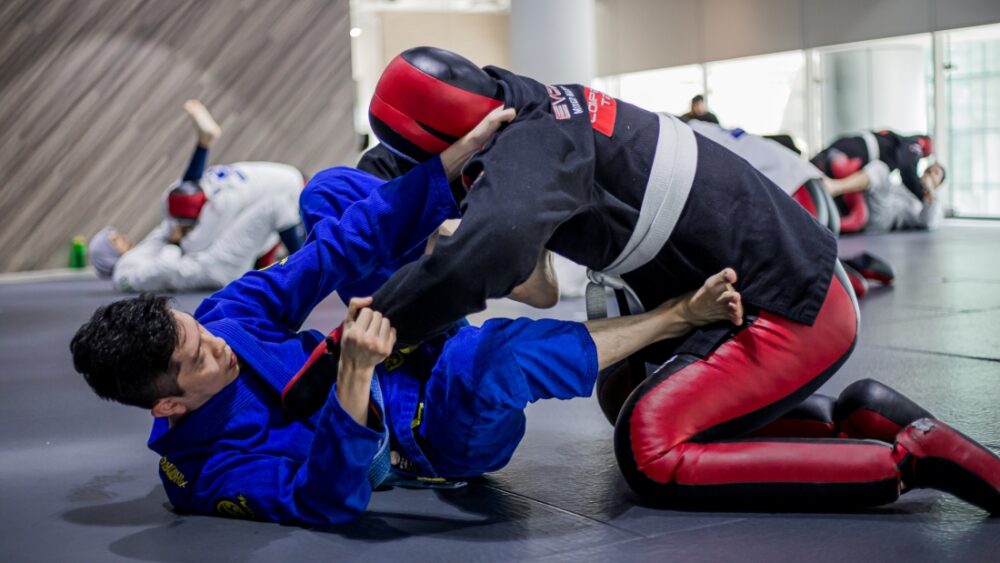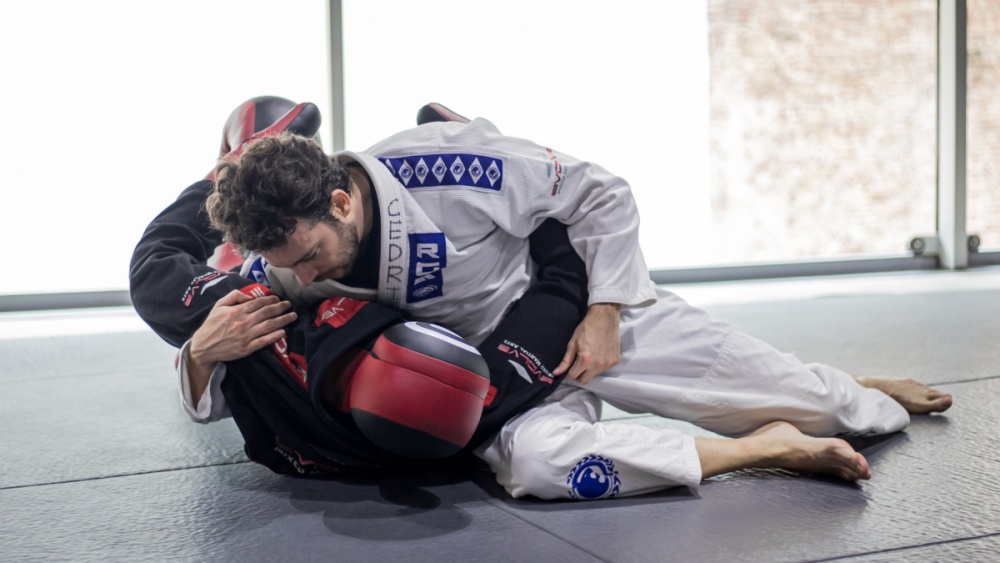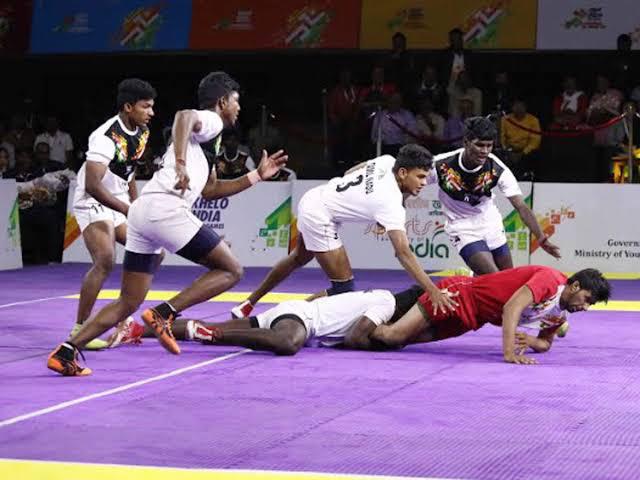In Brazilian Jiu-Jitsu and Submission Grappling, solo grappling drills help to keep your skills razor-sharp even on days you don’t have anyone to roll around on the ground with. These exercises allow you to get a few extra practice reps on days you’re traveling or simply stuck at home. You can even improve aspects of your grappling by performing solo drills.
This article will explore how to use grappling equipment like grappling dummies, resistance bands, wall drills, and movement patterns to improve aspects of your fighting style on days you don’t have anyone to train with.
The Importance Of Solo Grappling Drills

Solo grappling drills sharpen technique, build confidence, and condition your body—so you’re ready when it’s time to roll.
Grapplers generally face greater challenges when working out on their own compared to strikers. Exercises like shadowboxing, heavy bag work, and footwork drills allow martial artists from different backgrounds, like Muay Thai, Boxing, and Kickboxing, to easily train fight-specific skills anywhere they are. But things are a little different for grapplers.
Solo grappling drills allow you to refine techniques, build muscle memory, and improve your conditioning. Repeating entries, sprawls, and transitions without resistance helps you refine the mechanics of your technique until they become part of who you are. The work you put in performing solo drills will pay off big time when you eventually roll with a training partner. Solo drills help to build confidence in your ability to execute techniques because you’ve put in the work.
1) Grappling Dummy Drills
A quality dummy is your closest thing to a live partner. Purchase one if you plan to train solo at home. Use it to drill takedowns, throws, and ground transitions:
- Double-Leg Entries: Secure a wrist or collar grip on your dummy, level change, and drive through the hips. Pop back up and repeat.
- Single-Leg Finishes: Cup the dummy’s ankle, pull it out, and lift into a high crotch. Walk it through to a double-leg position.
- Guard Passes: Mount the dummy, establish an underhook, and knee-cut the leg. Move to side control, then reset.
- Sit-Through Drills: From a turtle position with the dummy on your back, post a hand, shoot your leg through, and establish top control.
Grappling dummies cost anywhere from $60 to $200, depending on their weight and the materials used to make them. Purchasing a high-quality grappling dummy is always an excellent investment for grapplers since you get many years of grappling with it!
2) Resistance-Band Takedowns
Resistance bands add variable tension levels through the shooting motion, mimicking the resistance a training partner would offer when working on your entries. Find something sturdy to anchor down a resistance band and loop it around your hips. You can then work on techniques like:
- Level-Change Drills: Change levels and shoot in as if you were going in for a double-leg takedown, while the resistance band pulls you back.
- Penetration Steps: Drive through your front leg after level changing to stretch the resistance band and return to the starting position.
- Sprawl-And-Reset: Move away from the anchor point so there’s tension in the resistance band and sprawl back as you drop to the ground. Return to the starting position and repeat.
Bands come in varying tension limits, so start with light bands and work your way to heavier bands as you become stronger. Research shows that resistance bands can help increase muscle activation by as much as 40% compared to body-weight exercises alone.
3) Wall Drills For Shot Precision
Here are some grappling drills that allow you to replace your training partners with a wall:
- Wall Walk-Through: Stand facing a wall at arm’s length. Slide down into a half-kneeling position, driving your lead shoulder toward the wall as if you were shooting for a takedown. Your lead foot should be flat while your rear heel faces up or away from you. Return to the starting position to complete a rep.
- Back-Angle Reps: Press your chest into the wall at quarter squat level to reinforce a strong back angle. Hold the position for 2–3 seconds and return to the starting position.
- Single-Leg Wall Taps: Tap one of your feet on the wall behind you after lowering your level, mimicking the movement you make when shooting in for takedowns and snap back to return to base.
Wall grappling drills help to build proprioception and reinforce maintaining proper posture during explosive movements.
4) Movement Patterning
No partner? No problem. Use these solo patterns to simulate live action:
- Sprawl-Shoot-Lateral Shuffle: Sprawl, pop to your feet, shuffle left, shuffle right, and sprawl again.
- Hip-Heist Circuits: Post on one hand while seated, lift your hips off the ground, and rotate to the opposite side. Perform the same movement on your other side to complete a rep.
- Bear-Crawl Shots: Bear-crawl forward four steps, then shoot a penetration step. Repeat.
Perform these in circuits of 30–60 seconds with minimal rest to build endurance and technical fluidity.
Plyometrics Meets Grappling
Explosive strength plays a vital role in grappling sports, helping to win matches. Your ability to generate explosive power is what makes techniques like the bridge and roll effective. Increase your explosive strength with plyometric exercises like:
- Box Jumps: Help build explosive energy, which is critical for driving through takedowns.
- Broad Jumps: Build horizontal power, which helps with level changes.
- Lateral Bounds: Improves reactive agility when setting up takedowns.
Studies show plyometric training can increase lower-body power by 10 to 15% in six weeks, which translates to faster shots and sprawls on the mat.
Improving Your Grappling Skills With Solo Drills

Structure solo grappling like a mini class: warm up, drill techniques, hit conditioning and plyometrics, then cool down—adjust intensity to match your fitness level.
Structure your solo grappling sessions as if they’re mini classes. Start by warming up for about five minutes with dynamic stretches and light sprawls. Work on your techniques for 20 minutes before moving on to conditioning exercises.
Spend ten minutes on plyometrics to build explosive power and finish off with a five-minute cool-down with static stretches. Adjust your work-to-rest ratios based on your fitness level.
Train Smart And Stay Sharp—Even Without A Partner
Solo grappling drills allow you to get quality training done on days you can’t make it to the dojo. Bust out your dummy, resistance bands, or find a wall, and get to work the next time you can’t hit the mat.
You may also like:
The Top 5 Upper Body Takedowns For BJJ
High-intensity interval training (HIIT) alternates all-out efforts with brief rest or low-intensity periods. Unlike steady-state cardio, HIIT exercises, martial arts such as Muay Thai, and some aspects of BJJ, pushes you into anaerobic zones. Think…
Feeling a little anxious heading into your first sparring session in martial arts is perfectly normal. You’ve never had the chance to test your skills against resisting opponents, and you’re unsure about how well you’ll…
Brazilian Jiu-Jitsu is known for its highly technical ground game, but the truth is every match begins standing. Whether it’s a competition setting, a self-defense scenario, or an MMA fight, learning how to bring your…
In Brazilian Jiu-Jitsu, facing an unorthodox position like the inverted guard can be overwhelming, especially for newer practitioners or those more familiar with traditional passing sequences. The inverted guard flips the script, quite literally, and…
BJJ is known for its complex ground game, but every match begins on the feet. Whether you’re competing in the Gi or No-Gi, your ability to control and pass the guard sets the tone for…
Recently, many Brazilian Jiu-Jitsu grappling stars have made the move to showcase their talent on the ONE Championship global stage. One of the most exciting new acquisitions is Diogo Reis, joining the ranks of Marcelo…
Bullying often brings out all sorts of negative emotions in children, and parents usually don’t know how to start the conversation. Children tend to be hesitant to admit they’re getting bullied because it often makes…
In BJJ, Submission Grappling, and Wrestling, improving your ability to explode into takedowns doesn’t just add more brute strength to your takedowns, it also allows you to close distances quicker as your entry speed increases….
Many professional athletes incorporate swim training into their workout routines to take their training to the next level. Swim training pushes your lung capacity and muscle endurance, helping to build you into a more durable,…
You’ve probably heard that martial arts training builds character, discipline, and confidence, but did you know it can also help children with attention-deficit/hyperactivity disorder (ADHD) manage their symptoms? In a fast-paced, academically driven place like…
Nowadays, it’s common for teenagers to spend hours each day on electronic devices like smartphones, tablets, TVs, and gaming consoles. Most of them spend way more time staring at screens than they do on their…
Intermittent fasting (IF) has been popular among martial arts fighters for decades, with legends like Georges St. Pierre swearing by its effectiveness. While the idea of skipping meals before intense training often sparks debate, this…


![[WATCH] Virat Kohli opens up on fondness for Chinnaswamy Stadium](https://lbsports88.com/wp-content/uploads/2025/11/watch-virat-kohli-opens-up-on-fondness-for-chinnaswamy-stadium-360x180.jpg)



![[WATCH] IND vs SA 2025: Rishabh Pant vents frustration at Kuldeep Yadav for slow over-rate warning](https://lbsports88.com/wp-content/uploads/2025/11/watch-ind-vs-sa-2025-rishabh-pant-vents-frustration-at-kuldeep-yadav-for-slow-over-rate-warning-360x180.jpg)

























![[WATCH] Virat Kohli opens up on fondness for Chinnaswamy Stadium](https://lbsports88.com/wp-content/uploads/2025/11/watch-virat-kohli-opens-up-on-fondness-for-chinnaswamy-stadium-120x86.jpg)



![[WATCH] Virat Kohli opens up on fondness for Chinnaswamy Stadium](https://lbsports88.com/wp-content/uploads/2025/11/watch-virat-kohli-opens-up-on-fondness-for-chinnaswamy-stadium-350x250.jpg)